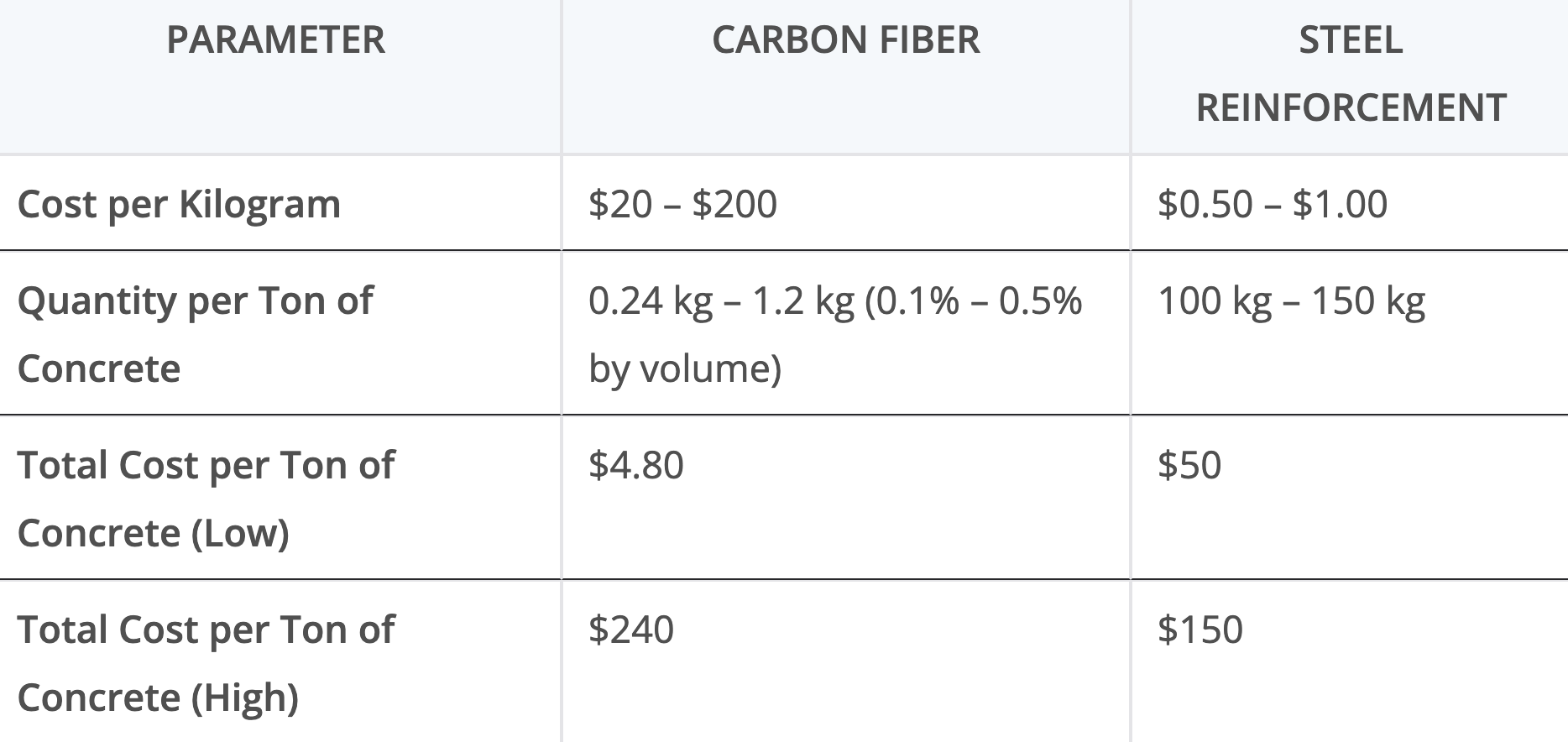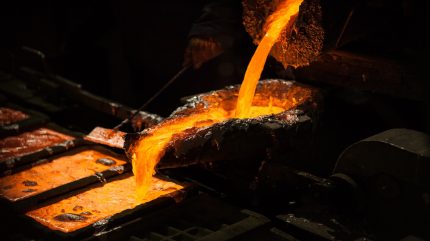Sign up for daily news updates from CleanTechnica on email. Or follow us on Google News!
Reinforced concrete was invented in the mid-19th century, a game-changer in the construction world. French gardener Joseph Monier is often credited with its creation. While experimenting with materials to build stronger garden pots and tubs, he had the idea to combine concrete with iron mesh in 1849. Monier patented his innovation in 1867, and the concept quickly took off. Engineers and builders recognized the potential of this new material, leading to its widespread adoption.
Reinforced concrete is the construction world’s go-to material, blending concrete and steel for maximum strength. Concrete, made from cement, water, sand, and gravel, is great under compression, but falters under tension. Enter steel rebar, which excels where concrete fails, creating a super-strong combo that’s both durable and versatile.
The thermal expansion characteristics of steel and concrete are crucial because they ensure the structural integrity of reinforced concrete under varying temperatures. Both materials expand and contract at similar rates when exposed to temperature changes, preventing internal stress that could lead to cracking or weakening of the structure. If steel and concrete expanded at significantly different rates, the bond between them could break, compromising the material’s strength and stability. This compatibility in thermal expansion means that reinforced concrete can withstand the daily and seasonal temperature fluctuations without degrading, making it reliable for a wide range of environments and uses.
This material shines in many areas. It’s used in the foundations, beams, columns, and slabs of buildings, as well as in infrastructure projects like bridges, tunnels, and highways. Its durability makes it a favorite for marine structures like piers and docks too. Reinforced concrete can handle fire and bad weather, making it suitable for various climates and conditions.
Making reinforced concrete involves a few steps. First, temporary molds, called formwork, are set up to shape the concrete. Steel rebar is then placed inside these molds. Next, the concrete mix is poured in, ensuring it completely surrounds the steel. After pouring, the concrete needs to cure, which involves keeping it moist for a while so it reaches its full strength.
There are different types of reinforced concrete. Pre-tensioned concrete has steel tendons tensioned before the concrete is poured. Once the concrete sets, the tension is released, compressing the concrete. Post-tensioned concrete, on the other hand, has steel tendons tensioned after the concrete sets, allowing for on-site adjustments. Another type is fiber-reinforced concrete, which uses fibers like steel, glass, or synthetic materials mixed into the concrete to enhance its properties. More on fiber later, as there is often confusion around it.
Steel mesh and rebar are both used to reinforce concrete, but their applications differ significantly. Steel mesh, often found in large sheets or rolls, is favored for its ease of installation and cost-effectiveness, particularly in projects requiring quick setup, like driveways, sidewalks, and residential flooring. It provides uniform strength distribution across large areas, making it ideal for thinner slabs where rebar might be cumbersome. Conversely, rebar is preferred for its high tensile strength and flexibility in placement, essential for heavy-duty structures such as foundations, columns, and beams that bear substantial loads.
Reinforced concrete isn’t without its challenges. Steel can rust if not properly protected, compromising the structure. Ensuring the steel reinforcement is clear of rust and dirt before pouring is essential for achieving a strong bond with the concrete. Ensuring proper mixing, placing, and curing of concrete is crucial for its performance. Crumbling or cracking concrete can expose the steel reinforcement to the elements, leading to rust and corrosion that weaken the overall structural integrity and compromise the longevity of the construction.
And then there’s the carbon debt. Just as cement has high carbon emissions, steel also comes with a carbon price on its head. Steel production methods vary significantly in their carbon emissions per ton of steel produced. The traditional blast furnace method emits around 1.8 to 2.2 tons of CO2 per ton of steel due to the use of coke (a type of coal) to reduce iron ore. The electric arc furnace (EAF) method, which melts recycled scrap steel using electricity, has lower emissions, typically around 0.3 to 0.7 tons of CO2 per ton, lower when powered by renewable energy. The choice of energy sources and materials used in each method plays a crucial role in determining their overall carbon footprint.
Steel production using electric arc furnaces varies widely by geography. In the United States, EAFs account for about 71% of steel production, driven by their flexibility and lower environmental impact compared to traditional methods and has for decades, although it’s common to use natural gas for pre-heating. Europe sees around 40% of its steel produced via EAFs, lagging the USA considerably, in part due to blast furnaces being integrated into their industrial processes and in part because they export a lot of scrap steel, 17.6 million tons in 2022 alone. In India, EAFs contribute 25% of steel production, with a gradual increase as the country balances growing demand with sustainability efforts. Meanwhile, China, the largest steel producer globally, relies heavily on blast furnaces, with only about 10% of its steel made using EAFs, though this is slowly increasing to meet environmental goals.
Electric arc furnace steel production emits carbon from several sources, including electricity usage, electrode production and consumption, pre-heating with gas, and scrap steel handling. Additionally, transportation of materials contributes to the overall carbon footprint. To mitigate these emissions, switching to renewable energy sources like wind, solar, and hydro can virtually eliminate the carbon footprint from electricity. Using low-carbon or recycled electrodes further helps in cutting down emissions. Pre-heating scrap steel with gas can be made more eco-friendly by using electric pre-heating. Electrifying transportation of materials and powering it with renewable electricity can significantly reduce emissions from logistics. Moreover, optimizing the scrap steel supply chain to minimize transportation emissions and using locally sourced materials can reduce the carbon debt. Implementing energy-efficient practices and advanced technologies in the EAF process, such as heat recovery and continuous monitoring systems, can also contribute to significantly lowering overall emissions, making EAF steel production more environmentally friendly.
When reinforcing concrete with steel, the percentage of steel by volume can significantly impact the carbon debt of the material. For reinforced concrete with 1% steel by volume, which equates to 78.5 kg of steel per ton of concrete, the carbon debt varies depending on the production method. Using very low-carbon electric arc furnace steel results in approximately 7.85 kg of CO2 emissions, normal EAF steel produces about 23.55 kg of CO2, and blast furnace-basic oxygen furnace steel generates around 157 kg of CO2.
Increasing the steel content to 2% by volume, or 157 kg of steel per ton of concrete, the carbon debt also rises. With very low-carbon EAF steel, the emissions are approximately 15.7 kg of CO2. For normal EAF steel, the carbon debt is about 47.1 kg of CO2, and for BOF steel, it is roughly 314 kg of CO2.

In my scenario projection of iron and steel demand, production methods, and carbon intensity decade by decade through 2100, all geographies rise to around 75% of demand met by scrap, with all of the low-carbon levers pulled for EAF steel, and the remainder is met through some combination of hydrogen or electrolysis reduction of iron combined with electric arc furnaces. That will drive down the carbon intensity per ton of steel down to perhaps 0.1 tons of CO2 per ton of steel, and hence bring the carbon intensity down substantially.
There are alternatives to steel reinforcement, of course. Fiberglass, or glass fiber-reinforced concrete (GFRC), is increasingly used in construction to enhance the performance and durability of concrete structures. It is particularly effective in replacing mesh reinforcement in applications like thin slabs, driveways, sidewalks, and various architectural elements. The addition of fiberglass to concrete significantly improves its tensile and flexural strength, offering better crack resistance and overall durability. This material is also lightweight and versatile, making it ideal for intricate designs and precast products. While fiberglass is not suitable for replacing rebar in heavy load-bearing structures, it excels in non-structural and decorative applications.
Short fibers are typically incorporated to enhance tensile strength and crack resistance, resulting in a smoother surface finish ideal for decorative panels, sidewalks, and slabs. This approach not only improves the concrete’s performance but also streamlines the construction process by eliminating the need for separate mesh installation. On the other hand, long fibers are used in more demanding applications, such as precast elements and industrial flooring, where they provide greater structural integrity and load-bearing capacity. Longer fibers can create a rougher texture on the concrete surface, which is less critical in such heavy-duty applications. Mixing the fibers with the concrete before pouring speeds up the process, ensuring efficient placement and consistent reinforcement throughout the structure.
Using fiberglass reinforcement in concrete adds a relatively low carbon debt compared to other reinforcement methods. On average, the production of fiberglass emits about 1.0 to 1.5 tons of CO2 per ton of fiberglass produced. In typical applications where 5 to 10 kg of fiberglass is used per ton of concrete, this translates to an additional 5 to 15 kg of CO2 per ton of concrete.
The production of fiberglass involves several carbon-emitting steps, starting with the extraction and processing of raw materials like silica sand, limestone, and soda ash. The melting process, where these materials are heated to high temperatures in energy-intensive furnaces, significantly contributes to CO2 emissions. Fiber formation and the subsequent application and curing of protective coatings add further emissions. Additional processing steps, such as cutting and forming mats or woven fabrics, consume more energy, while the transportation of both raw materials to the production site and finished products to customers also adds to the carbon footprint. Ancillary processes, including facility operations and waste management, contribute to the overall emissions, making the production of fiberglass a complex interplay of various carbon-intensive activities.
This is all amenable to decarbonization. Using renewable energy sources such as wind, solar, or hydroelectric power for the energy-intensive melting process can drastically cut emissions. Incorporating recycled materials like post-consumer glass reduces the need for raw material extraction and processing. Implementing advanced furnace technologies with improved insulation and more efficient melting techniques can enhance energy efficiency. Applying eco-friendly sizing materials and optimizing curing processes to use less energy also helps. Streamlining transportation logistics and using electric vehicles lowers emissions from raw material and product transport. Finally, adopting energy-efficient practices in facility operations and improving waste management through recycling and reuse can further reduce the overall carbon footprint of fiberglass production.
If all these interventions were applied, the carbon debt of producing one ton of fiberglass could be reduced to approximately 0.4 to 0.5 tons of CO2, representing a substantial reduction from the current 1.0 to 1.5 tons of CO2.
In concrete construction, costs are typically divided into three main categories: materials, transportation, and labor. Materials account for the largest portion, comprising 40-60% of the total cost. This includes the concrete mix, reinforcement materials like steel rebar or fiberglass, formwork, and other additives. Transportation, covering the delivery of raw materials and concrete to the site, makes up about 10-20% of the total expense. Labor costs, which include wages for on-site workers, skilled tradespeople, and supervisory staff, range from 20-40%. For instance, in a $100,000 project, materials might cost $50,000, transportation $15,000, and labor $35,000. Factors such as project size, location, local labor rates, and material prices can influence these percentages, but this breakdown offers a typical view of how concrete construction costs are allocated.
When comparing the costs of fiberglass reinforcement to steel mesh in concrete construction, both materials and labor expenses need to be considered. Fiberglass reinforcement, costing between $4,400 and $6,600 per ton, is significantly more expensive than steel mesh, which ranges from $600 to $1,000 per ton. For a typical application, fiberglass requires about 5 to 10 kg per ton of concrete, translating to $22 to $66 in material costs, while steel mesh requires 20 to 30 kg per ton of concrete, amounting to $12 to $30. Labor costs for fiberglass are lower because it is lighter and easier to handle, and it can be mixed directly into the concrete, eliminating the need for cutting and placing mesh.
But there’s another trick up concrete’s sleeve. Carbon fiber offers several advantages in reinforced concrete, notably its high strength-to-weight ratio and resistance to corrosion and environmental degradation, making it ideal for enhancing the longevity and performance of concrete structures. It can replace rebar in some applications, not just mesh. However, carbon fiber is significantly more expensive than steel or fiberglass, limiting its use in large-scale projects to date.
The carbon debt of carbon fiber is lower than that of steel, but it still contributes to the overall environmental impact. For concrete reinforced with carbon fiber, the carbon debt is estimated at around 0.5 to 1 ton of CO2 per ton of carbon fiber produced. When used in reinforced concrete, typically requiring 10 to 20 kg of carbon fiber per ton of concrete, this translates to an additional 5 to 20 kg of CO2 per ton of concrete. Labor-wise, carbon fiber is easier to handle and install than steel rebar, reducing labor costs and time on-site.
Where carbon fiber shines is in reducing the amount of reinforced concrete needed at all. For instance, research in bridge deck reinforcement has revealed concrete tonnage savings ranging from 20% to 50% due to the enhanced strength and stiffness provided by carbon fiber reinforced concrete compared to traditional steel reinforcement. Similarly, in building beams and columns it has enabled thinner concrete dimensions while meeting structural requirements, leading to notable material savings. In repair and retrofit applications, it offers a cost-effective solution by strengthening existing concrete elements without the need for extensive concrete replacement. The precast concrete industry has embraced it allowing for the production of lightweight, high-performance concrete elements with reduced material usage.
Between cement, steel and the other materials, the carbon debt of reinforced concrete is around 0.4 tons of carbon dioxide per ton of concrete. Carbon fiber can reduce or eliminate the steel, and reduce the amount of concrete hence the carbon debts of all the components. Achieving a 50% total reduction in reinforced concrete emissions is entirely viable with this one wedge.

If carbon fiber saves so much carbon dioxide and so much concrete, why don’t we use it all the time? As the table above shows, in lower structural demand areas, it saves money, but in high structural demand areas it is costly. Working with carbon fiber in construction sites presents several challenges compared to traditional steel reinforcement. Carbon fiber is more brittle than steel, making it more susceptible to damage during handling and installation, and requires specialized training for workers. Cutting and shaping carbon fiber demands different tools and techniques, often involving diamond blades or other specialized equipment. Ensuring a proper bond between carbon fiber and concrete can be more challenging, necessitating special surface treatments or coatings, and compatibility issues with other materials can arise.
And, of course, we don’t make that much of it, perhaps 150,000 metric tons a year right now. That’s only enough for about 125 to 625 million tons of reinforced concrete, and we make perhaps 50 billion tons of the stuff annually. Even if we cut that by 30% to 35 billion tons, we aren’t making a huge dent.
Manufacturing more carbon fiber is limited by several factors, including material availability and cost, production process constraints, economic considerations, and environmental impact. The primary precursor for carbon fiber, polyacrylonitrile, is derived from petroleum, linking its availability and cost to the volatile oil market. The production process itself is energy-intensive, particularly during the oxidation and carbonization stages, making it expensive and challenging to scale efficiently. High production costs, encompassing raw materials, energy, labor, and equipment, further restrict widespread adoption of carbon fiber. Technological constraints, such as the need for advanced manufacturing technology and precision automation, also impede large-scale production. It’s not a scaled, optimized global industry like steel yet.
Its current high carbon intensity can be reduced. Using renewable energy sources such as solar, wind, or hydroelectric power for the energy-intensive stages like oxidation and carbonization can significantly lower greenhouse gas emissions. Developing bio-based precursors, such as lignin from the paper and pulp industry, offers a renewable alternative to petroleum-derived polyacrylonitrile. Additionally, recycling carbon fiber from end-of-life products and manufacturing scrap can reduce the need for virgin materials and associated emissions.
Technically, using carbon fiber reinforced concrete is a solved problem. Several finite element analysis software tools that support the analysis of carbon fiber reinforced concrete include ANSYS Composite PrepPost, ABAQUS Standard and Explicit, COMSOL Multiphysics Structural Mechanics Module, MSC Nastran for Composites, Autodesk Helius Composite, and Altair HyperWorks with HyperMesh and OptiStruct.
As always, the biggest hurdle, aside from cost, is slow regulatory and building code updates to allow it. The integration of carbon fiber reinforced concrete into building codes and regulatory frameworks varies globally and is still in the early stages compared to traditional materials like steel. In the United States, organizations like the American Concrete Institute and ASTM International have begun incorporating guidelines and standards for fiber-reinforced polymers, but specific codes for carbon fiber are limited. Europe has seen some progress, particularly in Germany, where carbon fiber is used in certain construction projects, though comprehensive building codes are still under development. Japan is more advanced in this area, with the Japan Society of Civil Engineers publishing guidelines on using fiber-reinforced polymers, including carbon fiber, for reinforcing concrete structures.
However, this is a matter of time. Carbon pricing and regulatory mandates about carbon debt per cubic meter of building materials are changing the economic and municipal approval constraints that the industry has to live within. While the cement, concrete and steel industries may not like it, construction is going to be using a lot less of their products in buildings and structures that deliver the same value in the future. Fiberglass will displace a great deal of wire mesh. Carbon fiber will displace more steel mesh, a lot of rebar and even a lot of concrete. Concrete’s outsized impact on climate will be substantially diminished as a result of these levers and others that I’ve been exploring in what has turned out to be concrete month.
Have a tip for CleanTechnica? Want to advertise? Want to suggest a guest for our CleanTech Talk podcast? Contact us here.
Latest CleanTechnica.TV Videos
CleanTechnica uses affiliate links. See our policy here.




